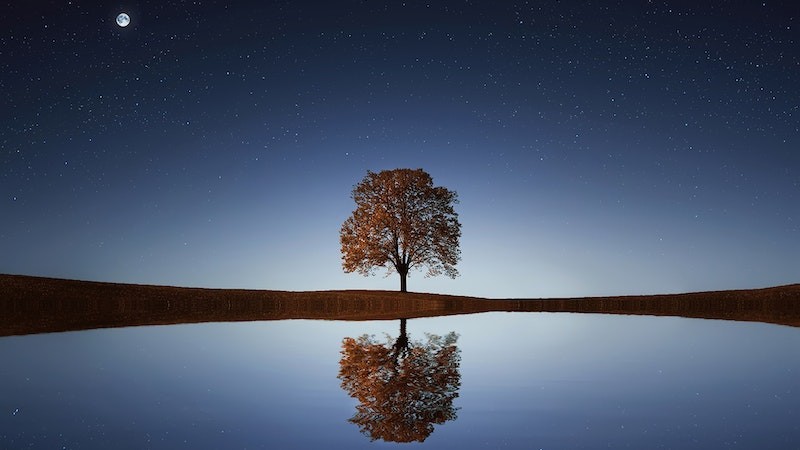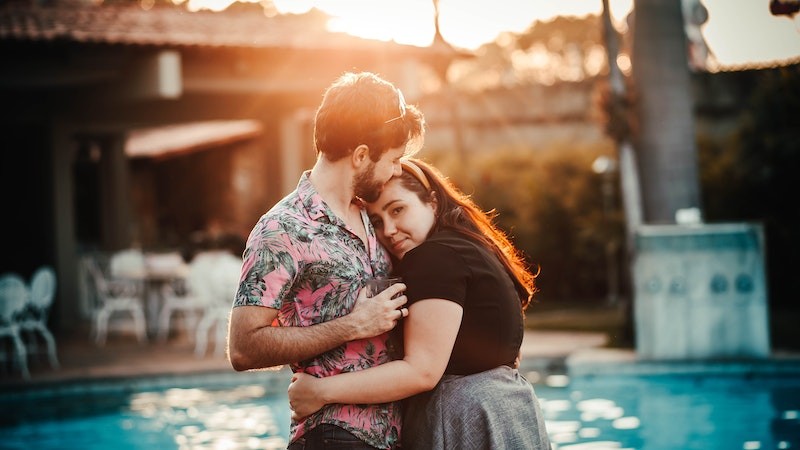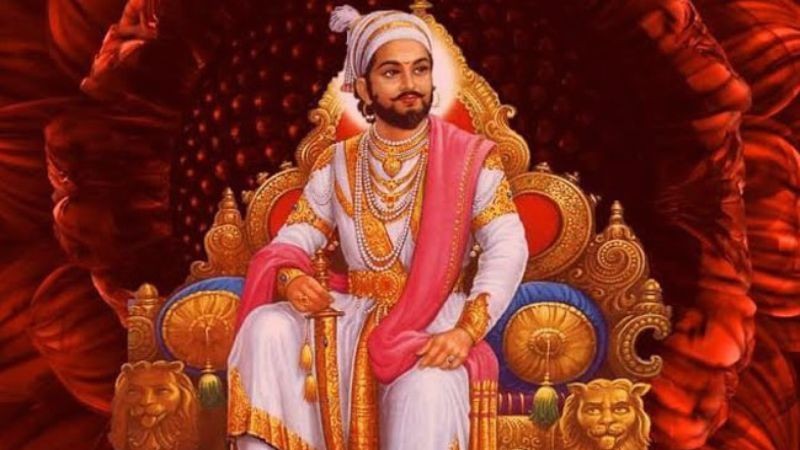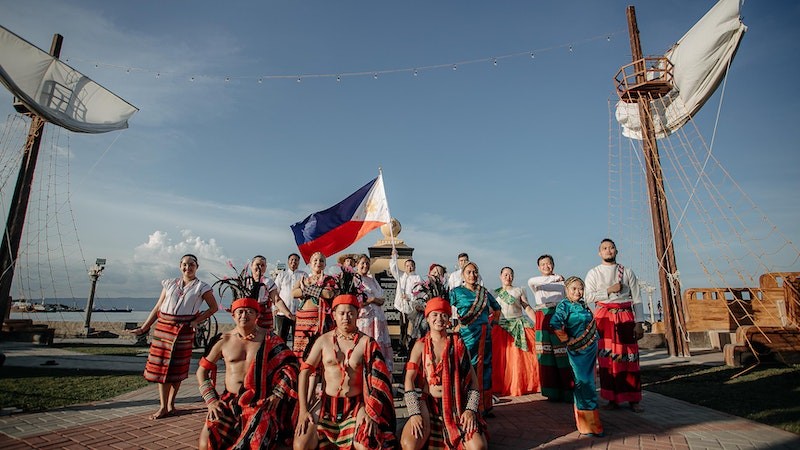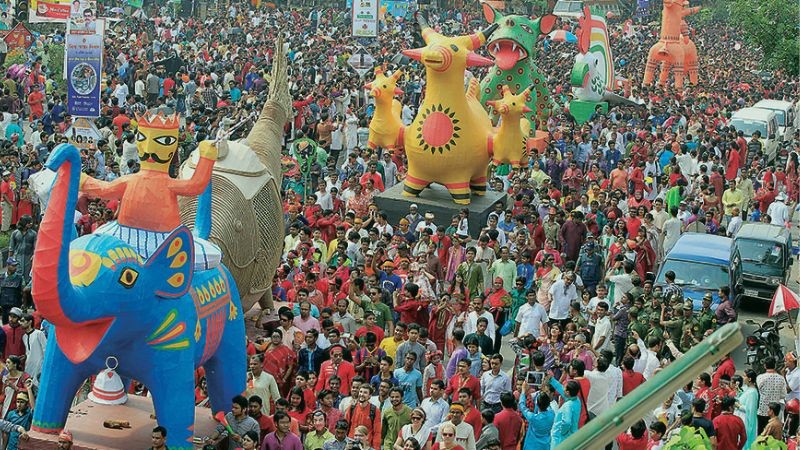
What is Pohela Boishakh?
The first month of the Bengali calendar is Pohela Boishakh, also called Poila Baisakh. It is the first day of the Bengali New Year celebration. It occurs annually in the middle of April and marks the beginning of the Bengali New Year.
On Pohela Boishakh, people celebrate the New Year with the hope of goodwill, wealth, and harmony. Like new year's celebrations worldwide, it is a holiday marked by renewal, rebirth, and joy. All ethnic Bengalis are united by Poila Boishakh, regardless of their differences in religion and locality, and celebrate this special day of the year.
Pohela Boishakh falls on one of the Southern Asian calendars' New Year's days. According to the official modified calendar created by the Bangla Academy, it is a national holiday observed in Bangladesh around April 14.
Pohela Boishakh - All Quick Overview
- Time / Date: April 14
- Category: Festival
- Where It’s Marked: Bangladesh, India (West Bengal, Tripura, Assam)
- Why It’s Marked: The day celebrates the first day of the Bengali Calendar, the Bengali New Year.
History Of Pohela Boishakh
The history of Pohela Boishakh goes way back in history. There are two versions of the story. Let's dig deep into them.
One version says the Bengali era is thought to have begun in 594 on the Gregorian calendar. It means that the Bengali year is 593 or 594 less than the Gregorian calendar, depending on whether Pohela Boishakh is coming up! It is said to have been initiated by Bengali King Shoshangko, according to the Drikpanchang.
Nevertheless, most trace their origins to a particular Mughal emperor, Akbar the Great, and the tax collection scheme during his rule (1556–1609). Agriculture was the primary source of income several hundred years ago. Bengal's six seasons naturally dictated the agricultural operation.
Tax collection during the Mughals' reign was based on the Arabic or Hijri calendar, which did not fully correspond to this region's cyclical cycle. The Baadshah (emperor), realizing the need for urgent reformation of the current year system, charged Fatelluah Shirazi, one of the many eminent intellectuals in his court, with the required changes.
Badshah Akbar established the exquisitely designed tradition of the New Year celebration, which takes place immediately following the tax-paying day. The entertainment and feasts lessened the hardship of tax payment. And it served as a way to plant the seeds of optimism for a brighter year for all.
How to Celebrate Pohela Boishakh
Pohela Boishakh is celebrated with great jubilation and vigor by Bengalis worldwide. This day is frequently used as an opportunity to visit with families, buy presents for loved ones, and indulge in Pohela Baisakh celebration dinners, to name a few.
Pohela Boishakh is rich in traditions and customs. There are parades and boisterous celebrations, many of which are reminiscent of traditional seasonal and agricultural festivities. Let's learn about them.
1. Customs
Pohela Boishakh has several customs that are observed religiously by Bengalis. Some are
(a) Cleansing
On this occasion, cleaning is a powerful custom. People clean their homes to eliminate all impurities and begin the new year pure. On the morning of Pohela Boishakh, people bathe and dress in their best linens. They visit friends and relatives, assemble to watch parades, or participate in festivals.
(b) Lal Par Sada Saree & Pajama- Panjabi ( Ethnic Wear)
Women drape brightly colored traditional lal par Saha sarees (white and red sarees). They also accessorize their hair with flowers and wear jewelry with brightly colored earrings, bangles, and neckless. Men dress in Panjabi paijamas with an off-whitish and crimson tone. The moment lovers connect, romance is in the air. The opportunity to socialize is also fantastic. The celebrations are shared by families and friends, who visit one another and exchange presents.
(c) Alpana
Alpana or Rangoli plays an essential part in the decoration process of Pohela Boishakh. All night long, men, women, and children enjoy drawing enormous Aalponas on the main streets and surrounding walls. Traditional patterns are painted on the front yard and stairways using vibrant colors like green, red, yellow, and blue, as well as powdered rice.
2. Traditions
Pohela Boishakh is primarily about honoring Bengal's humble, rural roots. Bengalis have stuck to the following traditions for years.
(a) Mangal Shobhajatra
In celebration of the Bangla New Year, thousands of people from all walks of life participate in the Mongol Shobhajatra, a vivid and colorful procession.
On Pahela Baishakh in 1989, the Faculty of Fine Arts at Dhaka University organized a vibrant procession called "Mangal Shobhajatra," which is Sanskrit for "procession of well-being."
Every city practices this unique tradition. Charukala hosts the biggest celebration on Pohela Boishakh. Thousands of people engage in rallies or campus marches and fill the streets with banners, posters, festoons, and masks. Each year's procession has a theme relating to politics, current events, or culture. Charukal Institute students make these over weeks.
(b) Haal Khata
On Pohela Boishakh, it is customary to close the old ledger and open a new one with fresh entries.
Traders close their books the day before Bengali New Year's Day and begin opening the new account book, the Haal Khata, to mark the start of the new fiscal year. It is thought that this strengthens and renews their commercial ties with clients.
Traders in the food, apparel, and gold industries invite their regular clients and provide them with sweets as entertainment.
(c) Boishakhi Mela
When it comes to Pohela Boishakh, one word automatically comes to everyone's mind: Boishakhi Mela!
A weeklong celebration is planned all around the country. The wide range of conventional interests and activities appeals to people from all socioeconomic classes. People get amazed by the main draws, which are the puppet performances and exciting rides like the Ferris wheel.
3. Food
Food plays a significant role in these celebrations of the Bengali New Year, or Pohela Boishakh. The event ushers in the start of the harvest of the crops. Family get-togethers, greetings, and extravagant feasts are all part of this Bengali celebration that has been eagerly anticipated. The Pohela Boishakh meal is usually presented in pottery, and people enjoy it with family and friends.
(a) Savory
On the morning of Pohela Boishakh, people gather on a lake's edge or behind large trees to see the sunrise. Many residents begin their days with the typical Panta Bhat breakfast of soaking rice, green chilies, onions, and fried hilsa fish. Panta Ilish is a well-liked food during the Pohela Boishakh celebration. It is a traditional tray of leftover rice soaked in water with fried hilsa, supplemented with pickles (achar), dried fish (shutki), mustered oil, lentils (daal), onion, and green chilies.
(b) Sweet
Sweets are an inevitable part of Pohela Boishakh! How can anyone not eat the saturated and juicy bits of delight?
Some famous Pohela Boishakh sweets are Rasogulla, Payesh, Rasomalai, Lobongo Latika, and a variety of pithas (cakes) made with rice powder and molasses.
4. Sports
During Pohela Boishakh, rural sports are played with utmost festivity.
Among the more well-known rural sports are flying pigeons, bull racing, kite flying, and the Nouka Baich (boat race).
Countries that Observe Pohela Boishakh
Pohela Boishakh is primarily celebrated in parts of India (West Bengal, Tripura, and Assam) and Bangladesh.
It is not only observed in Bengal but also by the Bengali communities in countries like the UK, the US, and Australia.
Interesting Facts About Pohela Boishakh
The celebration of Pahela Baishakh is of significance to the Bengali people. Some facts make it interesting! For instance,
- Many academics contend that Pohela Boishakh, the first Boishakh, was not a time for celebration for the majority of the population because they had to pay their taxes on the final day of Chaitra/Choitro, the month before Boishakh.
- Pohela Boishakh is a national holiday in Bangladesh and a state holiday in India in West Bengal and Assam.
- A centuries-old religious solar calendar is used in West Bengal and the rest of India. The date can be either April 14 or 15. The Hindu calendar isn't set in stone and is determined by various astronomical computations.
- The previous Bengali calendar was amended in 1966 by a committee under the leadership of Dr. Muhammad Shahidullah, and April 14 was set as the New Year. In 1987, April 14 became the official adoption.
- Pohela Boishakh takes place at the same time as other regional celebrations, such as Vishu in Kerala, Baisakhi in Punjab, Bihu in Assam, and Puthandu in Tamil Nadu.
- The "Kaal Boishakhi" (Nor'wester) occurs during the Boishakh month. Thunderstorms are considered to be a gift from the creator. They are sent to purge this region of the earth of impurities and disease.
- Mongol Shobhajatra is inscribed in Unesco cultural heritage list!
- There are two alternative spellings of the word "Alpana." One explanation is that it derives from the Sanskrit verb "Alimpana," which means "to coat with" or "to plaster with."
- On the holy occasion of Pohela Baisakh, people pray to the God Ganesha and the Goddess Lakshmi for a bountiful harvest.
Unique Pohela Boishakh Celebration Ideas
Pohela Boishakh is vibrant and filled with colorful celebrations. Nevertheless, you can always make the festival fun with unique ideas that will scream your name! You can pick one or some of the following:
- Draw a customized Alpana of your own choice at the entrance of your house.
- Be a proper Bangal! Customize your dress with both an ethnic and modern touch.
- DrinkKaal Boishakhi! Do not worry; it is a well-known drink made with burnt green mango syrup, vodka, lime, mint, or green mango slices as garnish!
- Host a Boishakh-themed party and surprise your friends and family with some traditional Bengali recipes on this Pohela Boishakh!
- Go out with your friends and enjoy the fun activities of Pohela Boishakh.
Pohela Boishakh Quotes
Bengali people cannot help wishing their near and dear ones a happy Pohela Boishakh! Some common wishes might include
"Shubho Noboborsho"
"Muchhe Jaak Glani, Ghuche Jaak Jora, Agni Snanay Shuchi Hok Dhora" (Let's hope and pray that tomorrow will bring another stunning sunrise that is unaffected by illness or affliction).
"Eseche notun bochor,, Sobai k janai sukhobor...Sobar mona anondo, Tobe kano mukh bundo.. Jore jore bola dorker,, Shuvo Noboborsho"
"May this occasion of Pohela Boishakh bring prosperity to your life!"
FAQ
1. Why do we celebrate Pohela Boishakh?
Pohela Boishakh, the most significant cultural event in the world, is when Bengalis enthusiastically welcome the New Year while adhering to long-standing customs known as "Borsho Boron Utsab." It is a celebration of interfaith and intercultural harmony.
2. Do Muslims celebrate Pohela Boishakh?
Yes. Regardless of community, class, religion, and race, Bengalis celebrate Pohela Boishakh.
3. Why do people wear white and red during the Pohela Boishakh celebration?
People wear red and white during the Bangali New Year to symbolize the coming of spring since "spring is widely connected with the fresh life in nature and the numerous beautiful colors in nature."
Bengali New Year's Day Observances
| Year | Weekday | Date | Name | Holiday Type |
|---|---|---|---|---|
| 2023 | Fri | 14 Apr | Bengali New Year's Day | Public |
| 2024 | Sun | 14 Apr | Bengali New Year's Day | Public |
| 2025 | Mon | 14 Apr | Bengali New Year's Day | Public |
| 2026 | Tue | 14 Apr | Bengali New Year's Day | Public |
| 2027 | Wed | 14 Apr | Bengali New Year's Day | Public |
We constantly update the dates of holidays that keep changing every year. However, while we revise and change some dates to be accurate, if you find any errors, kindly inform us . That will mean a lot to us.
